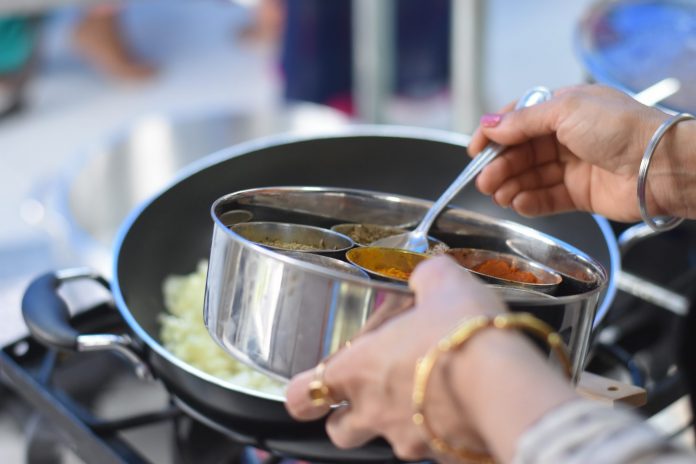Page contents
If you are reading this post, I assume you might be intrigued by the way my family decided to pursue it. Already, moving to the farm life, instead of conventional farming, we head for a food forest plan, so what else might be interesting here? I assume, most probably, you were brought up in a home with a television, phone, fridge… Those conveniences seem obvious to many, so it seems almost unbelievable that someone (yes, my family) voluntarily decides to live without… a fridge. Well, it’s 2021, almost 2 years after we set up the decision, and I honestly may say that, is just a question of getting used to the fact we don’t have a fridge. Or maybe better say: we don’t need one, do you?
Living off-grid teaches you to be truly independent. Moving out of the city and starting your off-grid life, at some point brings the feeling of liberation from modern chaos but on the other hand, you might feel initially lost without all the so-called high-tech necessities in life. That’s what I experienced after having decided to live without a fridge. Would you recall your great-grandmothers (or grandmothers) times, living without electricity or running water? Perhaps they had to carry their own water to fulfill primary necessities – cooking, washing, cleaning. How strong and adaptable they were to be a homemaker. They definitely had an enormous knowledge of how to manage such obstacles and for me, and my family, following their footsteps, it’s the way to be back to nature, our roots, and land movement.
There’s 1000 better things to spend 50k INR on
Independence from power companies, saving money on electricity bills, helping the planet by reducing carbon footprint, having more space at home. Was any of these points you thought thinking about living without a fridge? With this post I would like to show how we live on the farm without any cold storage – no fridge, no freezer – and we eat well throughout the year. Are you ready to get to know how to enjoy your food more and eat well as you do so?
The first step we did for living without a fridge was moving towards seasonal food. Before we set up the vegetable garden on the farm that really brought our food, before the first seeds sprouted, we were simply buying vegetables & fruits from the market (or farmers we knew), the more seasonal and the more local they were, the better. How do we recognize which food is seasonal – simply checking which veggie stock is on top that time and its price (in-season food is always less expensive).
If we learn how to plan food preparation/storage/preservation, everything seems easily doable.
To start off, as an expat in India, I may say the best thing that happened to me was learning how to cook from local ingredients. I cook almost all the time Indian dishes at home and that solution brought us not only savings (foreign products are obviously available in India but in bigger cities, not here – and are relatively expensive) but peace of mind shopping-wise.
We buy just enough fresh products to last a few days up to one week. We divide them into easily perishable and longer-lasting vegetables. Similarly, we do for meat – we buy only this much to finish within the same day or maximum next day morning. We cook it right away to add to this. And that we don’t eat non-vegetarian food often – we reduced meat consumption to one per month. Vegetables that in our climate rot/dry a lot if not eaten fast are carrots, beans, moringa, ladyfingers.
Half way to go – food storage
Whether we buy vegetables or harvest from the garden, we need to know (and actually we learned it fast) which one to use first, which will last longer kept outside. In general, without a fridge, we need to know how to store fruits and vegetables to keep their taste for as long as possible, on priority. Storing vegetables the right way will keep them fresh and safe to eat. Storage areas need to be well-ventilated, dry and as dark as possible. Additionally, we keep the storage containers handy (until we build the storage room in our future mud house), so we can check on the products daily. If anything is bruised, needs to be cooked first. Whatever we miss in daily food check-up will rot or mold…. From experience, for dry food items like pulses, millets, grains, rice, we can say mud containers work pretty well in South India climate.
If you think that buying seasonal and planning your meals for a couple of days ahead is enough to kick off life without fridge – nothing like this, few more things to cover. Follow below.
Eat food that spoils, but eat it before it does.
List of vegetables and fruits we store at room temperature (Tamil Nadu climate-wise):
- Bananas -> did you notice if bananas are kept in the fridge, the skin goes black and they lose their sweetness? If they are unripe and green in colour you can cover them with a thick breathable cloth and leave for few days.
- Potatoes (sweet potatoes) – can be stored for 2-3 months in a cool, dark place.
- Watermelons -> they will lose their flavour and red colour if lept in the fridge for a long time.
- Tomatoes -> those aren’t ripe won’t turn red in the fridge. They need to be at room temperature and can be kept like this for 1-7 days.
- Onions -> 1-2 months in a dry, air ventilated place to keep them from sprouting. You can store onions and potatoes together ony if you want potatoes to sprout.
- Garlic -> best container that worker for us was a breathable bag. Using garlic for a month now.
- Cabbage -> it will last around 2 weeks as long as you protect it from bruisingtoo much.
- Pumpkins -> from experience I can say along time in a room temperature – around 1 month or so. BUT the condition is, it has to stay unopen. Once opened, I suggest finishing it within a max of 2 days.
- Bottle gourds -> didn’t notice any of this vegetables to rot after a week or so as well.
Does it mean we will not buy things that need refrigerating? Absolutely not. We buy them but eat first on priority, most preferably same day.
Storing eggs
We store them also at room temperature – can use them for around 2 weeks’ time.
Storing milk and curd
We boil the entire milk in the morning, just after milking the cow. To keep it fresh until evening, I’ll boil it a second time during the day usually after lunch. Curd stays fresh for 1.5 days.
As of now, the nuisance we fight with, are rodents. Whenever any food item is left unattended – mice have a feast.
Food preservation techniques in rurar Tamil Nadu
When lockdown started, how many of you got a bit scared that the food supply chain will break? That shops will have limited food and maybe – there will be little left for you? Sounds scary? Even if that didn’t happen, such a scenario might be possible. Would you be prepared with your knowledge how to preserve food that stays longer edible? There are many ways of food storage without refrigeration, people use canning, curing, fermentation, dehydration, smoking. Here in Tamil Nadu, and on our farm, we use 2 main food long-term preservation methods: pickling and drying.
- Sun drying – drying is one such technique used in India but Tamil Nadu with it’s dry climate and moderate monsoon season is just perfect for it. Chillies, applams, vathals, vegetables like tomatoes, brinjal, onions coconuts for oil extraction.
- Pickling – with salt and oil we can preserve and pickle a lot of things that wouldn’t stay overnight.
Many of Indians will know pickling happens across the country, but mangoes and lemons are the most often Tamilians turn into . “The Tamils make something called Varu Maangai or baby raw mango pickle. The pieces are washed, sun-dried, coated with castor oil and salt.
And one extra piece of news from Tamil Nadu villages
In some villages here in Tamil Nadu people use a similar method to grow mountain garlic. Across Kodaikanal’s Manavanur village, harvested garlic is tied up in bundles and placed over the fire. They are cured and then travel to the market — a tradition the locals have been following for years.
Few principles we always follow
- We grow part of our food not to be dependent on the grocery stores. Living on the farm and growing our own food (the ultimate goal is to be fully self sustainable) makes it difficult to estimate how much harvest we’ll get from one season. Would you imagine for example cooking daily (yes, daily) the same dish from the pumpkin that grew in your garden? We neither. Anyone would be bored having same dishe in served in exactly same way, isn’t it? That’s why we rotate dishes – one ingredient, many cooking ideas.
- We shop fresh (no-refrigerated) veggies. When byuing vegetables or fruits that we know we’ll not keep in the fridge, we always, ALWAYS, select those that were not refrigerated. Once any produce has been refrigerated, it will quickly go bad, if not stored in the fridge again.
- We select no-bruised vegetables. Don’t get me wrong with this point. I don’t want to convince anyone to select only beautifully grown, ideal shaped vegetables… no, no, no. Not this way. It’s about not accepting any bruises, overripeness, anything that might be shortly rotten or have insect holes.
- We buy realistic quantity of food. When you cook yourself, you usually know how much do you (and your family) consume. Buy this much than you can comfortably fit in your storage areas, and cook without products getting spoiled.
- We are careful about veggies transport. Making sure nothing smashes the shopping bag as that will accelerate waste!
- Washing only what’s urgently needs washing. I prefer not to wash vegetables before longer storage (obviously those that need washing) but if I do, I get them all totally dry before storing. If they are not dry, they will just start to rot.
Final note about living without refrigeration
In a farm lifestyle, we manage, with limited chances of daily shopping (grocery shops are away around 6 km from our house) we like to have enough food stocked up from few days to a few weeks. We have rice, daals, flour in excess to use when the shopping option is not much available (that actually happened during the extended lockdown in Tamil Nadu).
Now you learned a bit about seasonal eating, food storage and learned how to implement different types of traditional food preservation, is there anything left? Would you be ready to live fridge-free?
I would love to hear your comments on this! Was the post interesting to you? Did you learn anything new? Or maybe I didn’t cover some of your kitchen tricks that may be useful in fridge-less life? Thank you very much for reading this article. I am curious if you have/had any experience of yours? Any comments? – please share your experience. And if you liked the article – share it, click “Like it” and “share it” with those who may need this knowledge.













